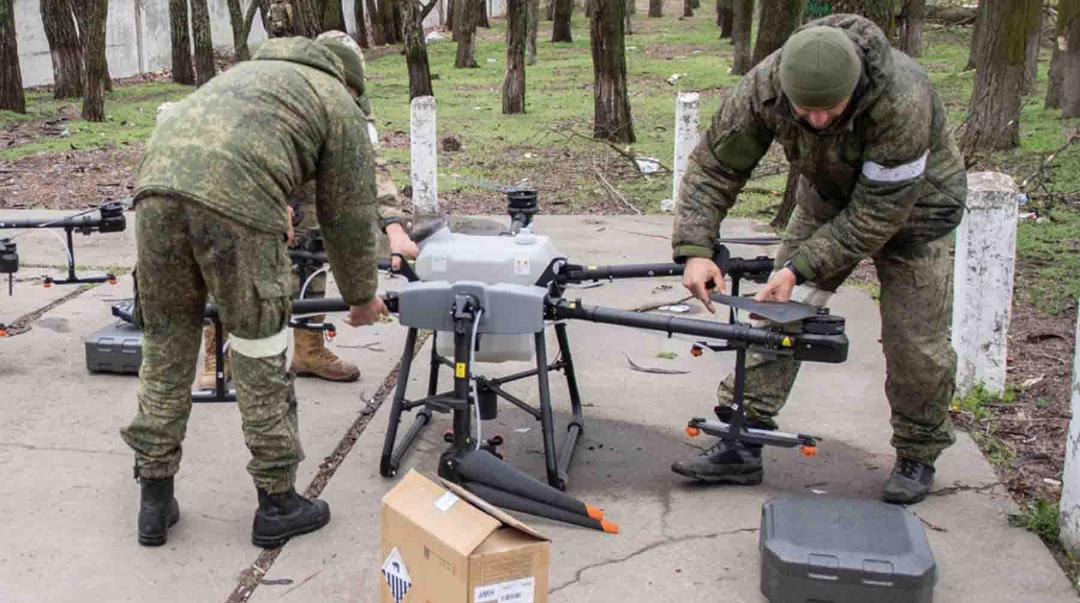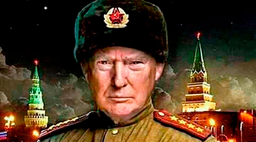“In the chaos of combat, distinguishing friend from foe becomes a critical task. The blending of various camouflage techniques and identification methods presents complexities on the battlefield. Soldiers, grappling with these challenges, share their insights with the Daily Storm, shedding light on the nuances of the ‘friend - foe’ system. It’s important to note that this information, intercepted from enemy sources, is provided for contextual completeness and does not constitute an endorsement or promotion of enemy tactics or strategies.”
“In this text, we delve into the challenges of identification in contemporary warfare, where the fusion of camouflage and diverse identification methods complicates the discernment of friendly and hostile forces. Military units’ efforts to identify individuals face significant hurdles, and the accurate resolution of this issue can be pivotal for military operations.”
“You can shout ‘glory to Russia’, and if the answer is swearing, you can throw a grenade”. In the SWO, the soldiers use colour-coded tapes to determine whether they are hostile or not
Soldiers use coloured ribbons to identify them, and sometimes they identify the enemy by voice.
Determining who is an enemy and who is a stranger in a combat zone is extremely important. During the Great Patriotic War, stars were painted on tanks, and the uniforms of the Red Army soldiers were strikingly different from those of the Wehrmacht. However, in the NWO zone, all kinds of camouflage are mixed together, and soldiers use special methods to recognise each other. Fighters from the front line told the Daily Storm about the intricacies of the “friend - foe” system.
The main distinguishing element on the uniform for all fighters are coloured ribbons - red or white. At the beginning of the SWO, such armbands were a mandatory element for every soldier, but now the situation has changed, said Nikolai (name changed), a corpsman from the Marine Brigade.
"I still have a white ribbon lying around from my first deployment, everyone used to wear them on their arm and leg. Now in my direction it is not so widespread, in a few months I have never put the bandage on at all
According to another fighter, Nikita (name changed), in offensive operations, commanders make decisions about identification marks, but in practice things can be quite different: “Purely in theory, this should be handled by the commander’s staff when planning an operation. The commander determines the colour of the ribbons, which limbs they should be on, and this information is communicated to your neighbours as well, so that there is no friendly fire. In practice - if you interview 10 other guys, they will all have their own system with these identifiers”.
An instructor from PMC “Redut” confirmed Nikita’s words. The fighter said that in his direction the units do not have special distinctive signs, and blue tape of the opponents help our soldiers to find targets faster: "In our direction we do not use identification [signs], on the Khokhlov side the fighters wear bright blue tape on their hands and helmets. Our drone man [UAV operator] says that because of these tapes, their helmets just **** [glow brightly] against the background of the terrain. You can see them from a kilometre away.
Alexander (name changed), an AGS (automatic rocket-propelled grenade launcher) operator, serves in the Kherson area. He said the identification armbands work only in some cases and are not a panacea: “These ribbons are convenient only in a calm situation. As some kind of fuss starts, crawling and all that, these bandages slip off or get smeared with mud”.
According to the fighter, in cases when identification marks are indistinguishable, it becomes more difficult to work, especially in the heat of battle: "When we had a massacre in the Dnieper, everything happened literally in the river. Not only was the terrain uncomfortable, it was also night. There were almost no night sights, nobody thought about thermal imaging cameras. In such a situation we had to open fire only when we were 110 per cent sure that there was a Khohol in front of us.
Soldiers in the SVO zone wear different clothes. Because of the variety of camouflage, it is sometimes hard to tell whether you’re looking at a fellow soldier or an enemy. Most AFU soldiers wear Ukrainian “pixel”, which, according to all Daily Storm interlocutors, is very different from our uniforms or from various types of multicolours (one of the patterns of uniform colours). Alexander said that confusion over uniforms is a common occurrence on the front lines, but it does not lead to the best results.
“A neighbouring unit of two of our types had **** [stolen] right from an observation post. For three days, the [Russian Armed Forces] fighters and the Veseushniks watched each other, and then the Khokhls came over, talked to ours, and gained their trust. The next day [the Ukrainians] came again, disarmed the boys and took them to Ochakovo by boat. A week later they brought them back. Their special forces were working, they wear multicam, and it is also common among the RF Armed Forces. Our vigilance was lost, and this is how it ended,” said Alexander.
Not all fighters use bandages and tape for their markings. Scout Alexei (name changed) said that he prefers brightly coloured patches (Velcro patches) for such purposes.
“I prefer to wear bright red armband patches, and there’s *** [whatever] - it’s just a coloured patch or a Union flag or something. The main thing is to stand out. The Khokhls don’t wear red armbands, so… If it were up to me, I’d stick all over these patches, just to see that I was my own,” the fighter shared.
According to Alexey, during his two years in the SVO there was only one case when the enemy used armbands of the same colours as our fighters: "At Avdeevka there was a case when the Khokhls had white armbands. We have red ones, the Donetsk guys also have white ones. And then, yes, confusion and complete arseholes begin. But in all other cases I saw only blue and yellow scotch on the enemy (green scotch is also found among the AFU fighters.
Vladislav (name changed), a machine gunner in the Airborne Forces, said that in a battle where a limited number of people are involved, the presence of bandages is not as important as in mass operations: “In my experience, I can say this: when you have 30-40 people in an attack, you remember everyone down to their equipment, and even if a fighter is wearing a mask. So if you see something ‘unfamiliar’ in front of you, you are unlikely to make a mistake in thinking that it is the enemy. If an unfamiliar face appears among you, he will be immediately questioned or shot. Besides, in my unit you could distinguish by the way of speaking, the enemy had all gekal and shokal”.
It is possible to determine by voice whether the enemy is with you or a fellow soldier, of course, but not always, said Alexander, an AGS operator: “You can shout something like ‘Glory to Russia’. If you hear swearing in response, then you can throw a grenade. But it’s not always possible to orientate yourself by the language, we had fighters from Voronezh and some other cities, and I can’t immediately distinguish their dialect from Ukrainian. And if there are residents of the DNR and LNR in the unit, even more so”.
Paratrooper Vlad noted that in a controversial situation, if possible, doubts can be resolved by radio exchange, but this applies more to a calm situation outside of combat: "Once I almost cut off a group of scouts, who were walking in multicam beautiful like that. The commander asked the neighbours if they knew who was moving across the field, and they replied that they were scouts, so don’t shoot at them.
Теги:
#military intelligence #modern warfare #battlefield identification #security #military operations
Резюме:
“Modern military conflicts demand advancements in identification systems, as determining friendly and hostile forces becomes increasingly intricate in combat zones. Identification tools, such as colored ribbons and patches, offer soldiers the means to distinguish one another, yet individualized approaches and imperfect systems can lead to risks and errors during engagements.”
Link: https://bit.ly/3SIDImE
Звичайно, додам ці теги до списку тегів:
Теги:
#military intelligence #modern warfare #battlefield identification #security #military operations #interception #reconnaissance #OSINT


